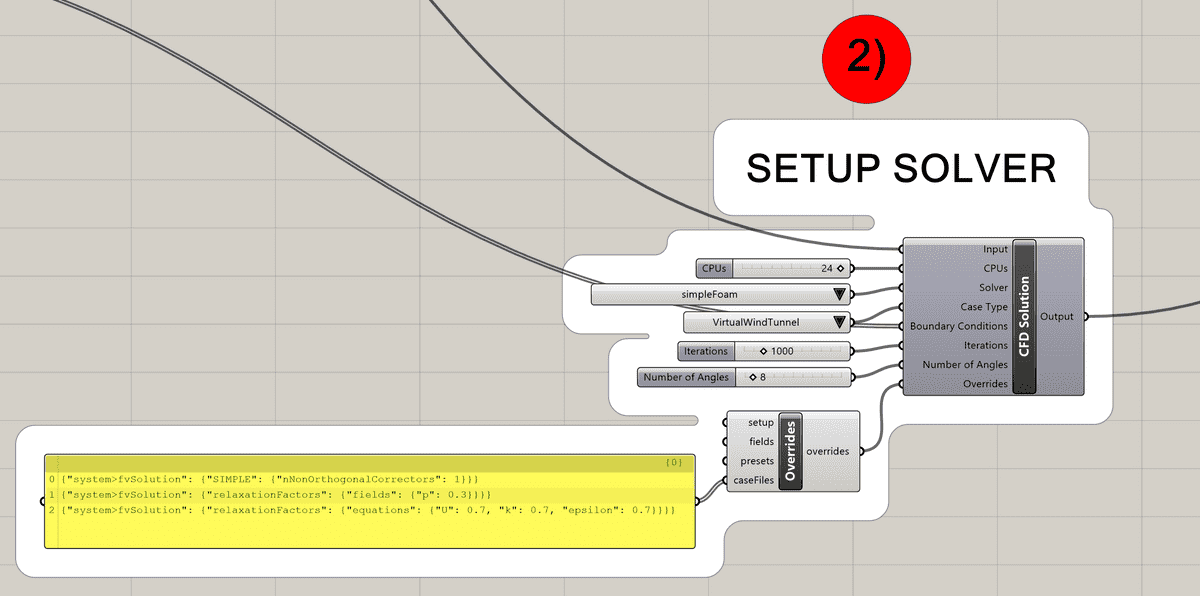Documentation
CFD
Tutorials
UI
Solution Overrides
Solution overrides is an easy way for applying case-wide adjustments to the simulation case you are running.
The override input on the CFD Solution component accepts the following keys:
{
"fields": [],
"caseFiles": [],
"presets": [],
"setup": []
}
Each of the four keys (fields, caseFiles, presets, setup) is a list overrides. Below in this article is an
explanation of how to use each of the override keys.
Fields
This defines overrides that will be applied to the "fields" definition of your case. The fields dictionary defines
which fields will be used (the files in the 0 folder). Applying overrides here allows you to define additional fields
for the simulation.
A field will look like this:
{
"U": {
"classType": "volVectorField",
"dimensions": [
0,
1,
-1,
0,
0,
0,
0
],
"internalField": "uniform (0 0 0)"
}
}
Case Files
This override will override settings within case files. The case file that you specify will be created if it does not
exist.
Note that we use a > to define path separators (not a slash /) this is because the backend data structure does
not support slashes in a dictionary key.
A case file override looks like this:
{
"folder>file": {
"testKey": "value"
}
}
If you for example wanted override the relaxation factors, an override could look like this:
{
"system>fvSolution": {
"relaxationFactors": {
"fields": {
"p": 0.3
}
}
}
}
Setup
This override will be run BEFORE setting up from template files. The setup makes adjustments (mostly removeIn) to
files that have been inherited from below. This is required because the basic merging of inherited templates does not
handle removeIn operations nicely (nested dictionaries cannot be wiped and re-created). But with setup they can.
Presets
This override lets you adjust presets globally, for example if you wanted to update a boundary condition preset, then
you would do it with the presest override.
Useful links
Convergence Criteria
By default, our presets doesn't include any convergence criteria. They can however be applied through the caseFiles
override. To see the format for convergence criteria go
to OpenFOAM's documentation
Relaxation Factors
The syntax for relaxation factors can be found here:
